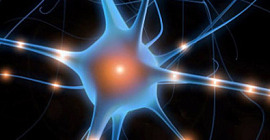Is there any treatment?
What is the prognosis?
What research is being done?
The National Institute of Neurological Disorders and Stroke (NINDS) conducts research related to hydromyelia in its clinics and laboratories at The National Institutes of Health (NIH) and supports additional research through grants to major research institutions across the country. Much of this research focuses on finding better ways to prevent, treat, and ultimately cure abnormalities of the spinal cord such as hydromyelia.
Article Source: National Institute Of Health










